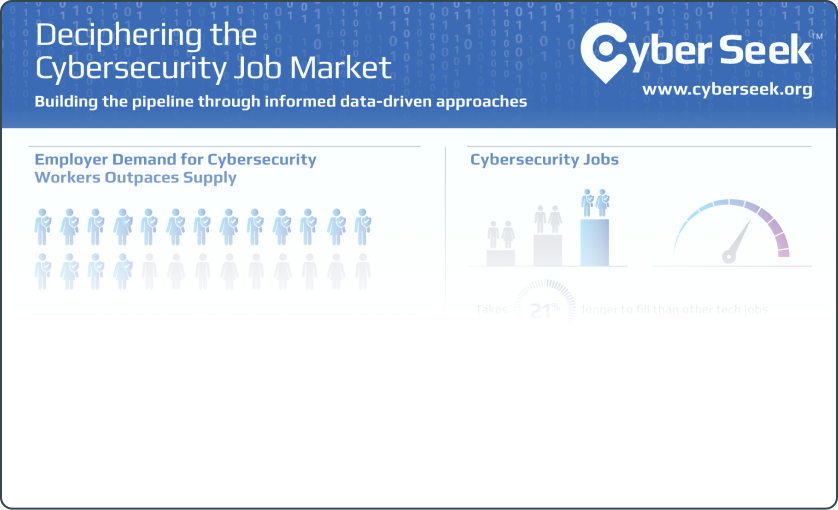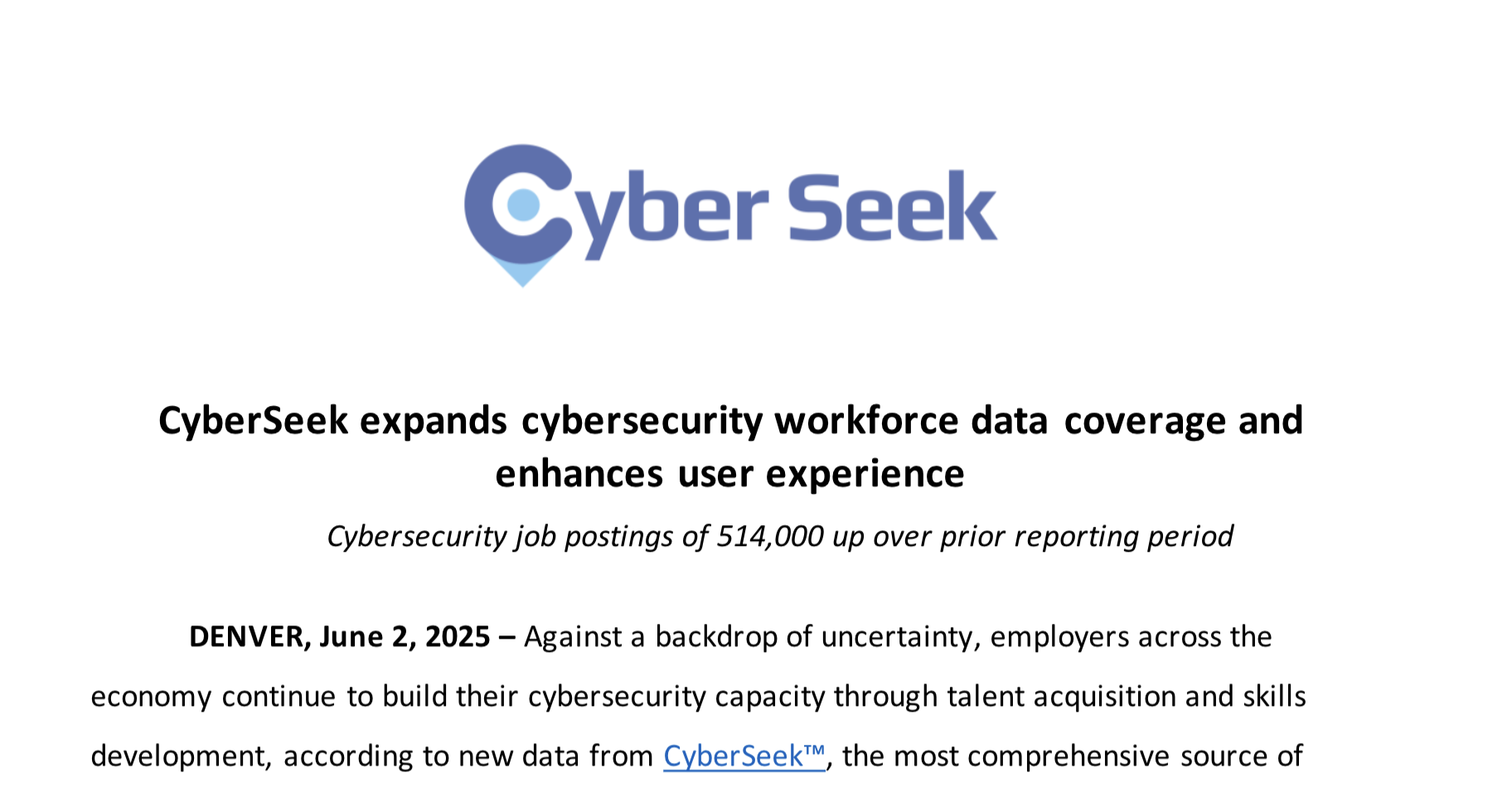The data analysis and aggregation powering
Cyberseek is
a
collaboration between Lightcast, NICE, and CompTIA. Lightcast's artificial intelligence technology analyzes
hundreds of millions of job postings and real-life career transitions to provide insight into labor market
patterns. Lightcast used a combination of skill and tool proficiencies, occupations, job titles, and
certifications found in job postings to define the broader Cybersecurity landscape. Thanks goes to CompTIA,
GIAC, IAPP, (ISC)² and ISACA for sharing the supply of certification holders for CyberSeek.
Gathering insights into high-potential career progression for workers, Lightcast constructed career pathways
out of the jobs core to the cybersecurity landscape. To calculate the NICE workrole category distribution, we
reviewed the tasks and KSAs associated with each work role and mapped them to our closest corresponding
skills, job titles, and certifications, customizing a matching NICE workrole for each job posting.
Supply estimations factor in all individuals relevant to the cybersecurity workforce. This includes those
employed in the field plus those with relevant skills and/or recent experience who are considered to be
actively searching on the job market. To derive such supply estimations, we leverage a combination of
government employment data, historic cybersecurity job openings and social profile data.
Demand estimations account for the flow of individuals in, out and through the field of cybersecurity and is
therefore quantified not only by employment and job openings, but also an estimation of the number of employee
separations. To derive such demand estimations, we leverage a combination of government employment data,
cybersecurity job openings and social profile data.
We calculated the location quotient by looking at the concentration of cybersecurity job postings compared to
other job postings—and compared that to the national average. Looking at this quotient, as well as the
cybersecurity supply/demand ratio, workers and employers can find where cybersecurity jobs are in demand and
in supply (or in very low supply).
Heatmap data is for the 12-month period September 2023 through August 2024. Career pathway data is for the
last 12 months from today's date.







.png)